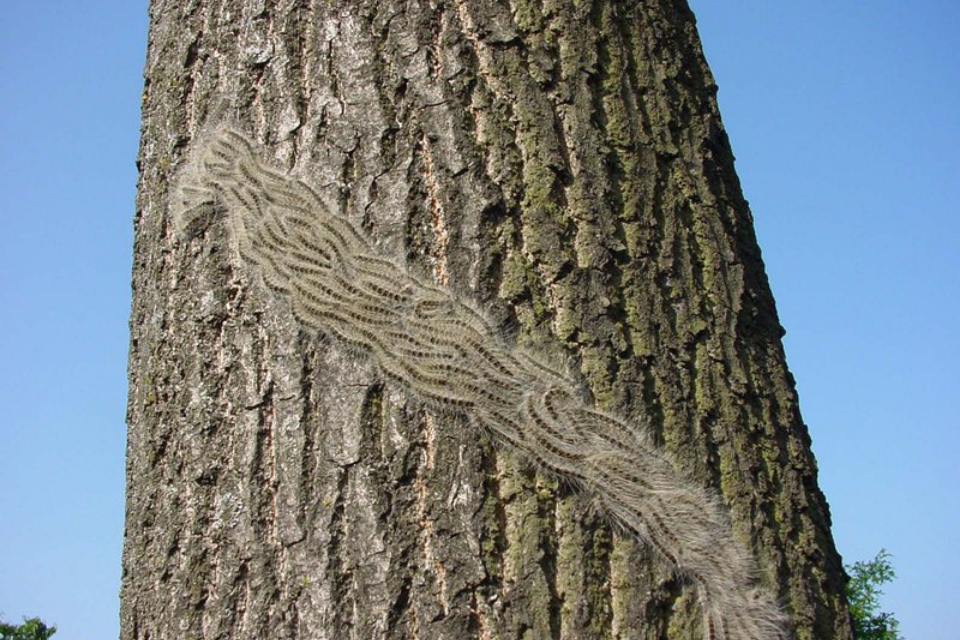The public are being urged today (Wednesday 28 May) to be vigilant for any sightings of oak processionary moth caterpillars, a tree pest which can strip oak trees of their foliage and leave them susceptible to disease.
The caterpillars – predominantly found in South East England – descend down oak trees in head-to-tail processionary form, occasionally taking the form of an arrow shape, earning them their name. They feed on the leaves as they migrate causing the leaves to sometimes drop off which negatively impacts their growth. This can weaken the tree and leave it more vulnerable to other stresses, such as drought and further diseases.
The warning has been issued today by the Forestry Commission who are urging the public to report any sightings via the TreeAlert portal or by email to [email protected].
Oak processionary moth was first identified in London in 2006 after being accidentally transported over from Europe in trees for planting. It has since spread to surrounding counties in the South East, and last July, a small outbreak of the caterpillars was found at a site designated free from the pest.
OPM caterpillars and their nests, which are made of distinctive white silken webbing, contain hairs that can cause itchy rashes, eye and throat irritation and should not be touched under any circumstances. The nests can be found in the trunk or branches of oak trees, and fade to a light brown over time. The public are urged never to try and dispose of the nests themselves.
Forestry Commission Oak Processionary Moth Programme Manager Dr Edward Straw said
“The warm weather in spring has led to oak processionary moth growing quicker than in previous years. We’re already receiving reports of homeowners being affected by the caterpillars, coming out in painful rashes, and it is important those living and working in areas affected by oak processionary moth remain vigilant about the health risks they pose.
“The Forestry Commission has a whole host of information online that can be used to identify the moth, simply visit managing oak processionary moth in England. If you spot the pest, report the sighting via our TreeAlert portal . Alternatively, you can email [email protected].”
The Forestry Commission continues to undertake a rapid management response and extensive surveillance work is in place to monitor the area and continue to direct appropriate control measures to prevent the potential spread of OPM.
Professor Nicola Spence, UK Chief Plant Health Officer, said
“Oak trees are an iconic and much-loved part of our British landscape. By reporting any sightings of the oak processionary moth to the Forestry Commission, we can all minimise the pest’s spread as well as reduce their impact on tree health.
“I would advise that members of the public living in London, the surrounding areas and Derbyshire, avoid any contact with the caterpillar and its nests, as this can cause irritation.”
By identifying threats such as pests and diseases, we protect the benefits plants provide to the public, to wildlife, the environment, and our economy. More information can be found on the Plant Health Action.org website.
How to identify Oak processionary moth caterpillars
- Nests are typically dome or teardrop-shaped, averaging the size of a tennis ball. They are white when fresh, but soon become discoloured and brown. The caterpillars have black heads and bodies covered in long white hairs which contain proteins which can cause itchy rashes, eye, and throat irritations. They can also occasionally cause breathing difficulties in people and pets, so should not be touched under any circumstances.
- A public information leaflet covering how to identify OPM and methods to control is available,
- There is also a document outlining species commonly confused with OPM which can be found here.
- For more information, visit ‘Managing Oak Processionary Moth in England’.








